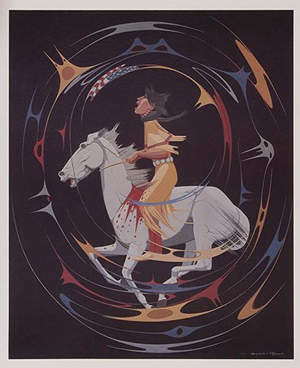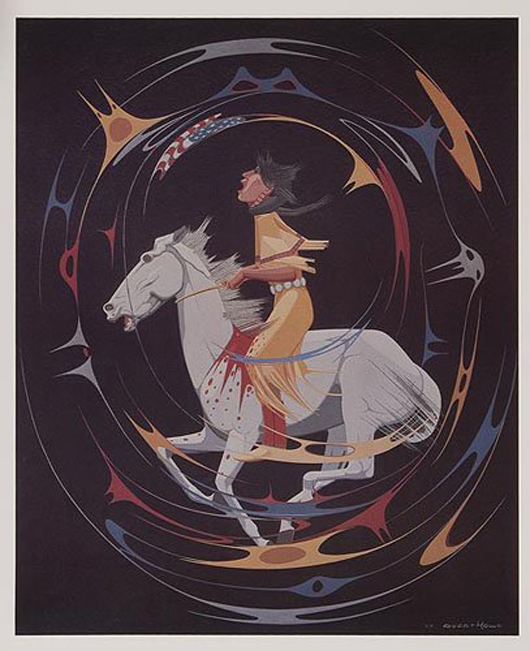
SIOUX FALLS, S.D. (AP) – Once told his artwork did not fit the definitions of a traditional Native American painting, Yanktonai Indian artist Oscar Howe is credited with leading the way for other Native American artists to free themselves from the constraints of stereotypes.
Howe, born on the Crow Creek Indian Reservation in South Dakota in 1915, used his Dakota heritage in his artwork. In 1958, when Howe submitted a piece to a national competition for American Indian artists, he was told his piece was too much of a departure from the institution’s rules for style. Howe refuted the limited definition of style and led the way in forcing museums to expand their views and allow a greater range of Native American styles and expressions.
“In my mind, (Howe) was a very radical person because he really said Native American art is built on expression, and if your expression means you paint in a different style, you’re still Native American. He argued and advocated for that,” said Alison Erazmus, director of the University Art Galleries at the University of South Dakota.
USD hosts the Oscar Howe Collection, the largest single collection of works by Howe, who was a USD faculty member for 25 years.
A new exhibit at the South Dakota Art Museum in Brookings, “Oscar Howe and Native American Games,” showcases paintings from the USD collection as well as artwork from the Howe family and the South Dakota State Historical Society. The paintings illustrate tribal people playing traditional games and are paired with game pieces from the early 1900 from the South Dakota State Historical Society in Pierre.
The exhibit runs through May 20.
One Howe piece, Feathered Bone Game, Woskate Paslo Hanpi, shows Native Americans sliding a piece that looks like an arrow between two parallel lines. Accompanying the painting is an actual game piece measuring 3 feet in length. The piece was made from a wooden shaft with a cow or buffalo horn tip.
Three paintings illustrate a game in which men readied for hunting by using wands to represent the antlers of an elk. The game was played before the men would leave for the hunt, said John Rychtarik, curator for the South Dakota Art Museum.
“They would toss up the hoop and try to catch it on this wand and keep it until it hit the ground, and then the person was considered the winner,” he said. “It looks like it would be a very physical and sometimes dangerous game.”
___
If You Go…
SOUTH DAKOTA ART MUSEUM: 936 Medary Ave., Brookings; http://www.sdstate.edu/southdakotaartmuseum or 605-688-5423. “Oscar Howe and Native American Games,” through May 20. Open Monday-Friday, 10 a.m.-5 p.m., Saturday-Sunday, 12 p.m.-4 p.m.
___
Follow Kristi Eaton on twitter at http://twitter.com/kristieaton.
Copyright 2012 Associated Press. All rights reserved. This material may not be published, broadcast, rewritten, or redistributed.
AP-WF-03-11-12 1853GMT
ADDITIONAL IMAGE OF NOTE



